
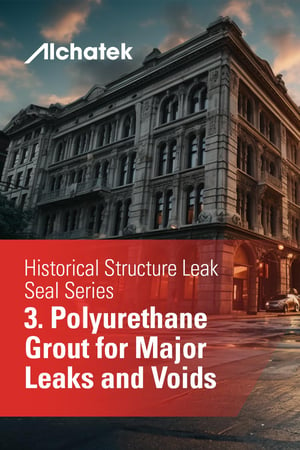 In the realm of historical building preservation, polyurethane grouts stand out as a vital tool for managing structural repairs, particularly in dealing with significant leaks and voids. Polyurethane grouts are injectable resins that react with water to expand and solidify, forming a sturdy, waterproof seal. This characteristic makes them especially suitable for repairing and reinforcing structures that have been compromised over time.
In the realm of historical building preservation, polyurethane grouts stand out as a vital tool for managing structural repairs, particularly in dealing with significant leaks and voids. Polyurethane grouts are injectable resins that react with water to expand and solidify, forming a sturdy, waterproof seal. This characteristic makes them especially suitable for repairing and reinforcing structures that have been compromised over time.
Mediating Major Leaks and Voids with Polyurethane Grouts
Polyurethane grouts excel in addressing two critical issues in historical buildings:
- Sealing Heavy Leaks: When faced with substantial water ingress, these grouts expand upon contact with moisture, effectively sealing off heavy leaks and their set time can easily be field adjusted.
- Filling Voids: They are adept at filling larger voids in the soil behind walls or underneath foundations, bolstering the structure and preventing future damage.
The Economic Advantages of Polyurethane Grouts
Polyurethane grouts are not just effective; they are also economically and materially prudent:
- Cost-Effectiveness: They offer a cost-efficient solution to major structural problems, mitigating the need for more invasive and expensive repairs.
- Material Compatibility: These grouts work well with a variety of traditional building materials, including stone, brick, and concrete, making them versatile for different historical structures.
Pairing Polyurethane with Acrylate Grouts
After addressing major leaks and voids with polyurethane grouts, any remaining slower leaks can be meticulously and precisely sealed using acrylate grout injections. This two-step approach ensures comprehensive leak sealing:
- Polyurethane for Major Issues: Initially, use polyurethane grouts for significant heavy leaks and soil voids.
- Acrylate for Precision: Follow up with acrylate grouts for finer, more precise crack injection or curtain grouting, ensuring a cleaner finish and maintaining the aesthetic integrity of the historical structure.
Hypothetical Scenarios: Showcasing the Combined Strength of Polyurethane and Acrylate Grouts
Let's envision how this dual approach can be applied:
- Scenario 1: The Gilded Age Theater: With a deteriorating stone foundation, this historic theater first uses polyurethane grouts to address large voids and major leaks. Subsequently, acrylate grouts are injected into smaller hairline cracks, providing a refined and less intrusive repair, and preserving the theater's historic charm.
- Scenario 2: The 18th-Century Brick Warehouse: Here, a brick warehouse faces extensive water leakage through its old walls. The initial application of polyurethane grouts stops the major leaks and fills voids. Then, acrylate grouts are used to seal smaller residual leaks, ensuring a thorough and aesthetically pleasing restoration.
This dual-grout strategy effectively combines the robust sealing power of polyurethane grouts with the precision and cleanliness of acrylate grouts, offering a comprehensive solution for preserving historical structures.




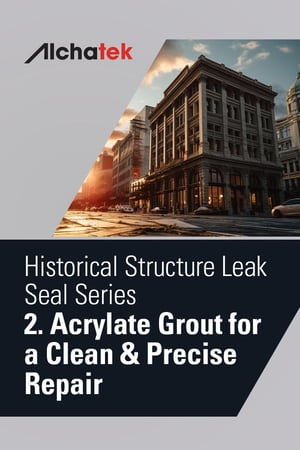 In the realm of historical structure preservation, acrylate grouts have become an essential tool. But what are they, precisely? Acrylate grouts are water-soluble resins that transform into a gel-like substance when mixed with specific catalysts. Renowned for their flexibility, strength, and compatibility with a broad range of building materials, these grouts are particularly suited to older buildings where traditional repair materials may fall short.
In the realm of historical structure preservation, acrylate grouts have become an essential tool. But what are they, precisely? Acrylate grouts are water-soluble resins that transform into a gel-like substance when mixed with specific catalysts. Renowned for their flexibility, strength, and compatibility with a broad range of building materials, these grouts are particularly suited to older buildings where traditional repair materials may fall short.
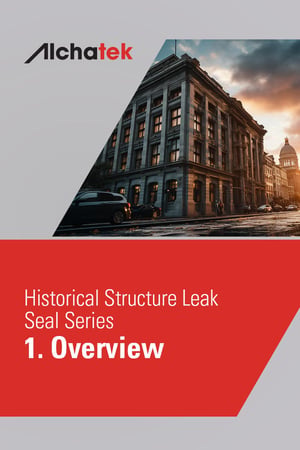 The preservation of architectural treasures is a paramount concern. These structures not only embody a rich history but also present unique challenges in maintenance and repair. One such challenge is effectively sealing leaks without compromising the building's aesthetic integrity or historical value. This series aims to provide an in-depth understanding of the advanced solutions available for this delicate task.
The preservation of architectural treasures is a paramount concern. These structures not only embody a rich history but also present unique challenges in maintenance and repair. One such challenge is effectively sealing leaks without compromising the building's aesthetic integrity or historical value. This series aims to provide an in-depth understanding of the advanced solutions available for this delicate task.
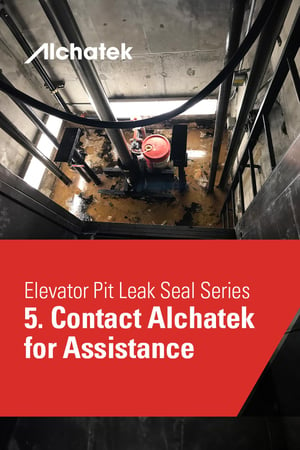 Addressing the complexities of hydraulic elevator pit repairs requires more than just a superficial understanding of the issue. It necessitates a deep dive into the technical aspects and an experienced hand to guide the process. In this realm, Alchatek emerges as a beacon of expertise and support for property owners and managers.
Addressing the complexities of hydraulic elevator pit repairs requires more than just a superficial understanding of the issue. It necessitates a deep dive into the technical aspects and an experienced hand to guide the process. In this realm, Alchatek emerges as a beacon of expertise and support for property owners and managers.
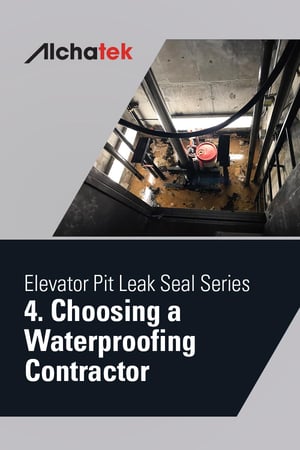 Polyurethane grout leak repair projects in elevator pits require specific skills and knowledge. A qualified contractor not only addresses current issues but also helps prevent future problems, ensuring the longevity and safety of your elevator system.
Polyurethane grout leak repair projects in elevator pits require specific skills and knowledge. A qualified contractor not only addresses current issues but also helps prevent future problems, ensuring the longevity and safety of your elevator system.
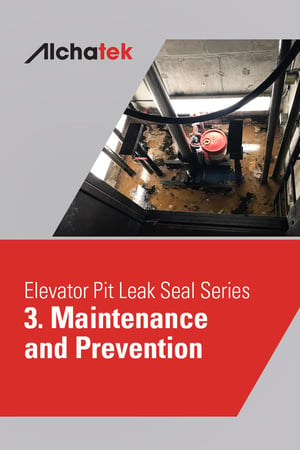 Neglecting regular maintenance can lead to several problems, besides corrosion, including water accumulation, which, when mixed with oil from hydraulic elevators, creates an environmental hazard and necessitates costly specialized removal. Regular maintenance not only prevents these issues but also extends the life of the elevator system and ensures compliance with safety regulations. It is also key to early leak detection and timely implementation of polyurethane leak seal projects when necessary.
Neglecting regular maintenance can lead to several problems, besides corrosion, including water accumulation, which, when mixed with oil from hydraulic elevators, creates an environmental hazard and necessitates costly specialized removal. Regular maintenance not only prevents these issues but also extends the life of the elevator system and ensures compliance with safety regulations. It is also key to early leak detection and timely implementation of polyurethane leak seal projects when necessary.
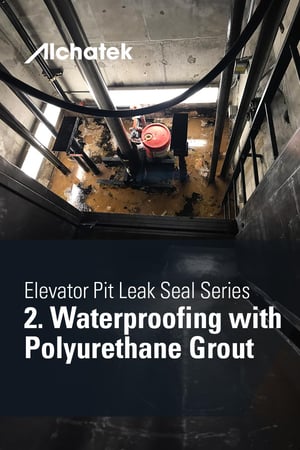 Following the previous discussion on the risks associated with water leakage in hydraulic elevator pits, this section focuses on an effective solution: polyurethane grout. Polyurethane grout is a highly efficient material used in construction for sealing and waterproofing. Its unique properties make it an ideal choice for addressing the issue of water leakage in elevator pits.
Following the previous discussion on the risks associated with water leakage in hydraulic elevator pits, this section focuses on an effective solution: polyurethane grout. Polyurethane grout is a highly efficient material used in construction for sealing and waterproofing. Its unique properties make it an ideal choice for addressing the issue of water leakage in elevator pits.
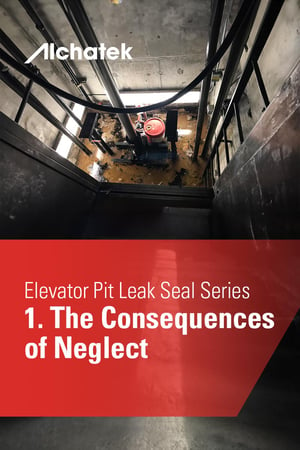 In the world of commercial and industrial buildings, hydraulic elevators are a common fixture. Integral to these systems are elevator pits, located at the bottom of the elevator shaft. They house important components that facilitate the elevator's movement. While often overlooked, these pits are vital for the smooth operation and safety of the elevator system.
In the world of commercial and industrial buildings, hydraulic elevators are a common fixture. Integral to these systems are elevator pits, located at the bottom of the elevator shaft. They house important components that facilitate the elevator's movement. While often overlooked, these pits are vital for the smooth operation and safety of the elevator system.
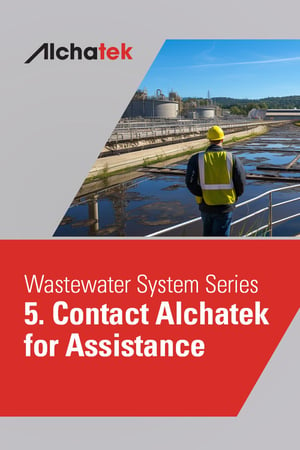 For municipalities, the adoption of polyurethane grout represents a commitment to cost efficiency, sustainability, and long-term planning. The following outlines the steps municipalities can take to effectively implement polyurethane grout solutions, ensuring that technical proficiency goes hand-in-hand with the economic benefits.
For municipalities, the adoption of polyurethane grout represents a commitment to cost efficiency, sustainability, and long-term planning. The following outlines the steps municipalities can take to effectively implement polyurethane grout solutions, ensuring that technical proficiency goes hand-in-hand with the economic benefits.
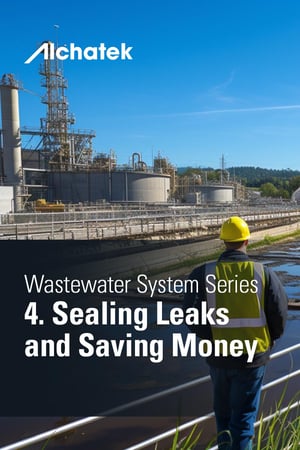 In the realm of wastewater management, the conversation around repair methods is often punctuated by the concern for cost. For municipal managers and administrators, understanding the financial implications of infrastructure repair decisions is as crucial as comprehending their technical benefits.
In the realm of wastewater management, the conversation around repair methods is often punctuated by the concern for cost. For municipal managers and administrators, understanding the financial implications of infrastructure repair decisions is as crucial as comprehending their technical benefits.